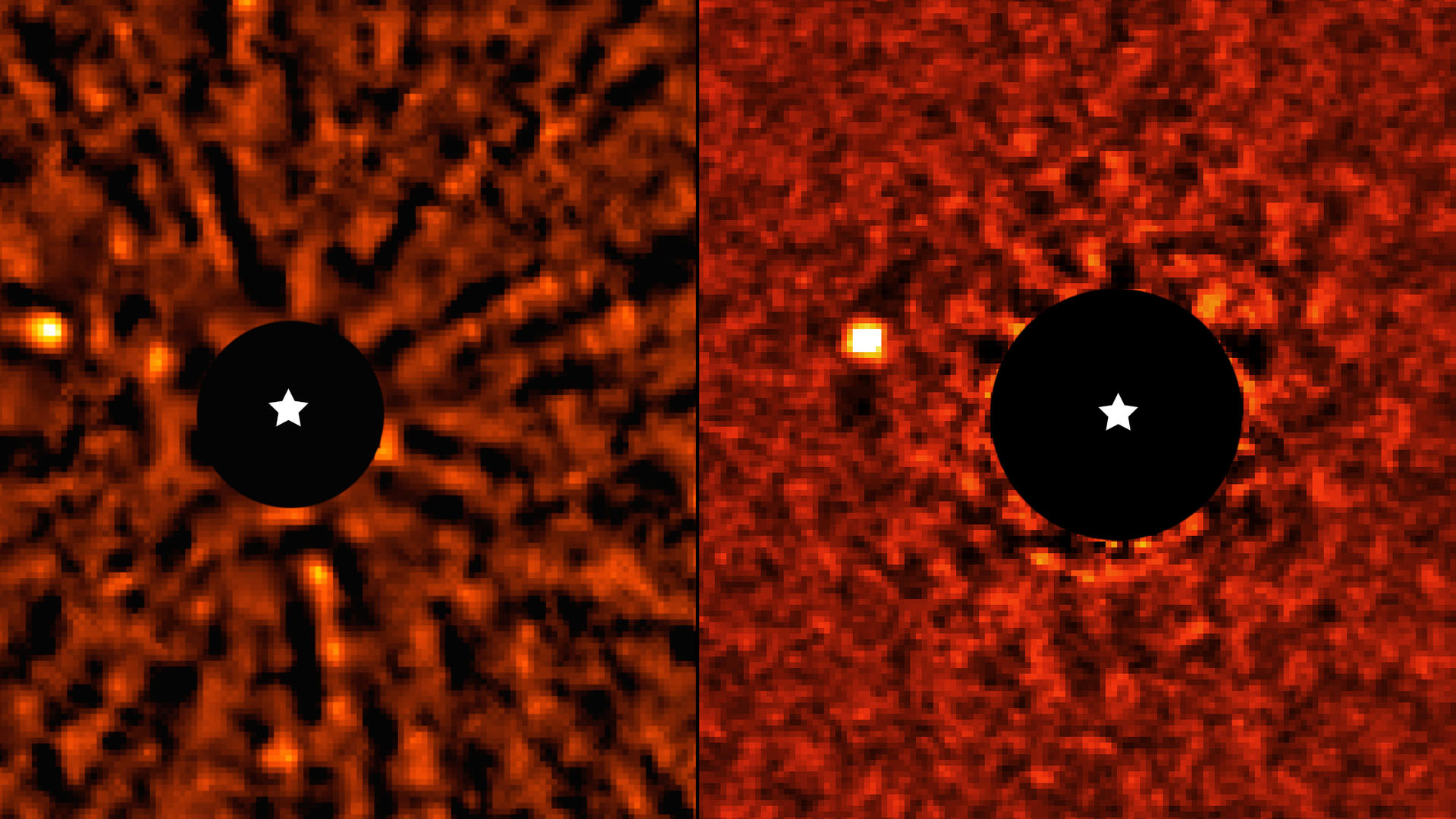Very Large Telescope photographs its lightest ever exoplanet
Taking direct images of exoplanets is notoriously difficult.

The Very Large Telescope in Chile took images of its lightest exoplanet yet after data from two European sky-mapping missions indicated something was tugging at the orbit of a distant young star.
The star in question is called AF Leporis and is some 87.5 light-years away from Earth in the constellation Lepus just south of the celestial equator. Two teams of astronomers have recently focused on this star after scouring through data gathered by the European Space Agency's Hipparcos and Gaia space telescopes. These two spacecraft focus on charting the positions and trajectories of stars in the sky. When the astronomers examined the telescopes' observations of AF Leporis, they found odd changes in the star's orbit, which suggested that a large planet might be present in its orbit.
"Planets exert a gravitational tug on their host stars, perturbing their trajectory on the sky," the European Southern Observatory (ESO), which operates the Very Large Telescope (VLT) and which released the images on Feb. 20, wrote in a statement. "The two teams found that the star AF Leporis exhibited such a disturbed trajectory, a telltale sign that a planet could be hiding there."
Related: The 10 most Earth-like exoplanets
The two teams used VLT's adaptive optics system called SPHERE, which can correct the distortion of the detected signal caused by Earth's atmosphere. SPHERE is also fitted with a coronagraph, a device that blocks the intense light from a star and enables astronomers to study in better detail the star's dimmer surroundings.
The astronomers' intuition proved correct and they discovered that an exoplanet four to six times as massive as the solar system's largest planet Jupiter was orbiting AF Leporis at about the same distance as Saturn orbits the sun.
According to the ESO statement, the exoplanet is the lightest ever discovered through the combination of detecting deviations in a star's orbit and direct imaging.
Get the Space.com Newsletter
Breaking space news, the latest updates on rocket launches, skywatching events and more!
Directly imaging exoplanets is notoriously difficult. Since the planets are so much dimmer than their host stars, astronomers can usually only obtain images of extremely large exoplanets that orbit very far from their stars. For example, the first exoplanet directly imaged by the famed James Webb Space Telescope, called HIP 65426 b, is 12 times more massive than Jupiter and orbits more than twice farther away from its star than Pluto orbits the sun. Less than 5% of the currently known more than 5,300 exoplanets have been directly imaged, according to the Planetary Society. The vast majority of these distant worlds have only been discovered thanks to the dimming effect they have on their parent star when they pass in front of it.
AF Leporis is about as massive and as hot as the sun, ESO wrote in the statement, and in addition to its one known planet the star also has a disk of debris similar to the solar system's Kuiper Belt. AF Leporis is, however, much younger than the sun. At 24 million years old, it is about 200 times younger than our star. This young age makes AF Leporis and its planetary system especially intriguing for astronomers as it can provide important insights into the evolution of our own solar system.
The observations were described in two papers that were submitted for publication in the journal Astronomy and Astrophysics and which are currently available online through Arxiv here and here.
Follow Tereza Pultarova on Twitter @TerezaPultarova. Follow us on Twitter @Spacedotcom and on Facebook.
Join our Space Forums to keep talking space on the latest missions, night sky and more! And if you have a news tip, correction or comment, let us know at: community@space.com.

Tereza is a London-based science and technology journalist, aspiring fiction writer and amateur gymnast. Originally from Prague, the Czech Republic, she spent the first seven years of her career working as a reporter, script-writer and presenter for various TV programmes of the Czech Public Service Television. She later took a career break to pursue further education and added a Master's in Science from the International Space University, France, to her Bachelor's in Journalism and Master's in Cultural Anthropology from Prague's Charles University. She worked as a reporter at the Engineering and Technology magazine, freelanced for a range of publications including Live Science, Space.com, Professional Engineering, Via Satellite and Space News and served as a maternity cover science editor at the European Space Agency.
-
rod From the reference cited, "This provided sensitivity to faint planetary-mass companions within 1 arcsec (∼30 au) of the star. We detected the companion AF Lep b at a separation of 339 mas (9 au), within the inner edge of its unresolved debris disk."Reply
Very nice. My observation, the exoplanet.eu site documents AF Lep b and properties.
http://exoplanet.eu/catalog/af_lep_b/, shows P = 8935 days. M = 5.1 Mjup, R=1.33 Rjup, mean density = 2.689 g cm^-3. The host star is 1.2 Msun, applying MMSN postulated protoplanetary disc mass initially could be 3995 earth masses, total dust and gas. The exoplanet at 5.1 Mjup is about 1621 earth masses. It orbits near 8.4 to 9 au from the host star with slightly shorter period than Saturn in our solar system, 8935 day period for AF Lep b, 24.46 years. The eccentricity is large too, e=0.47. The closest approach to its host star about 4.452 au and swinging out to about 12.348 au from parent star. Jupiter semi-major axis 5.203 au, Saturn 9.537 au. In our solar system, no such large exoplanets formed like AF Lep b. The exoplanet.eu site shows 217 imaged exoplanets now.









